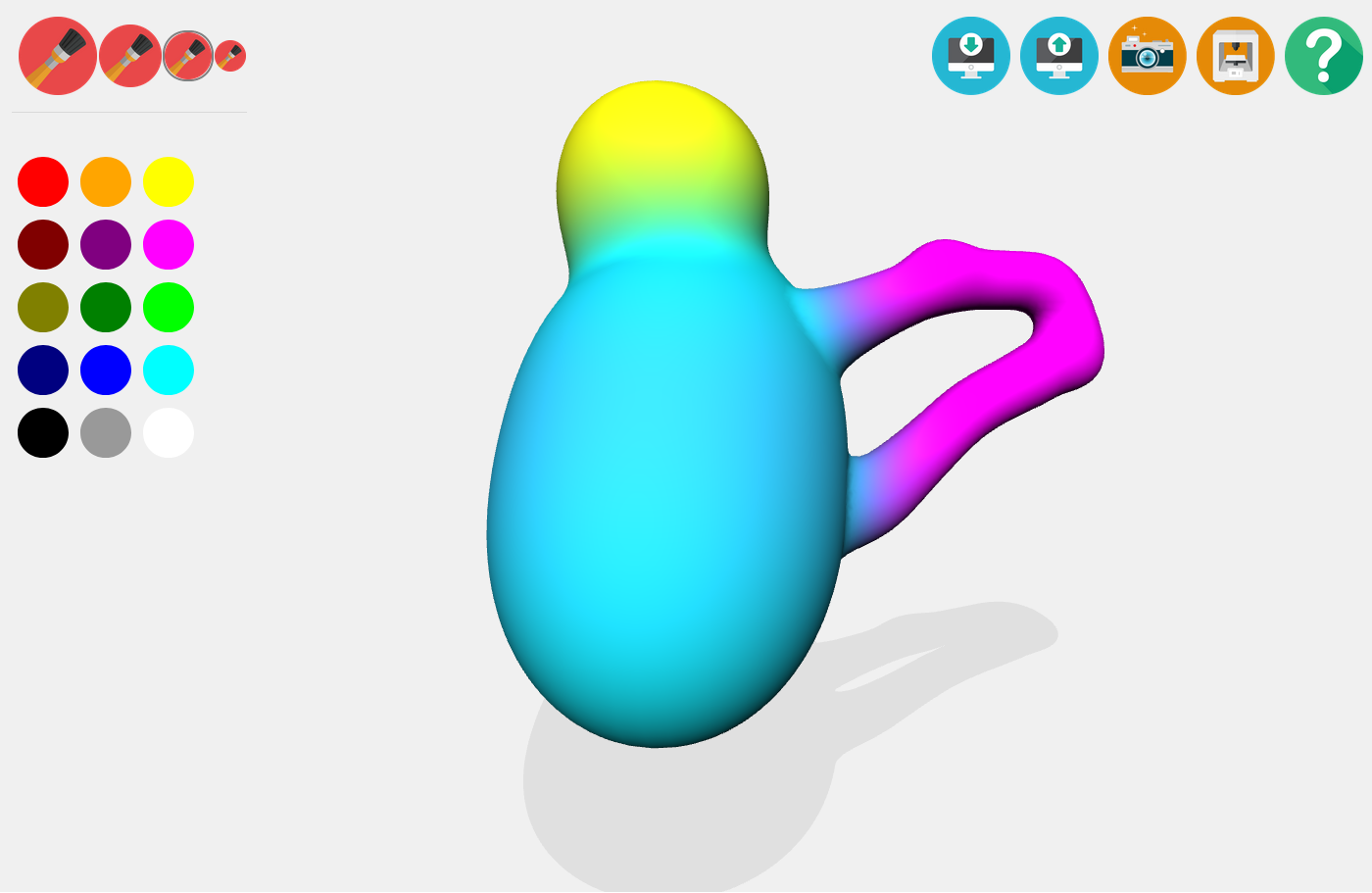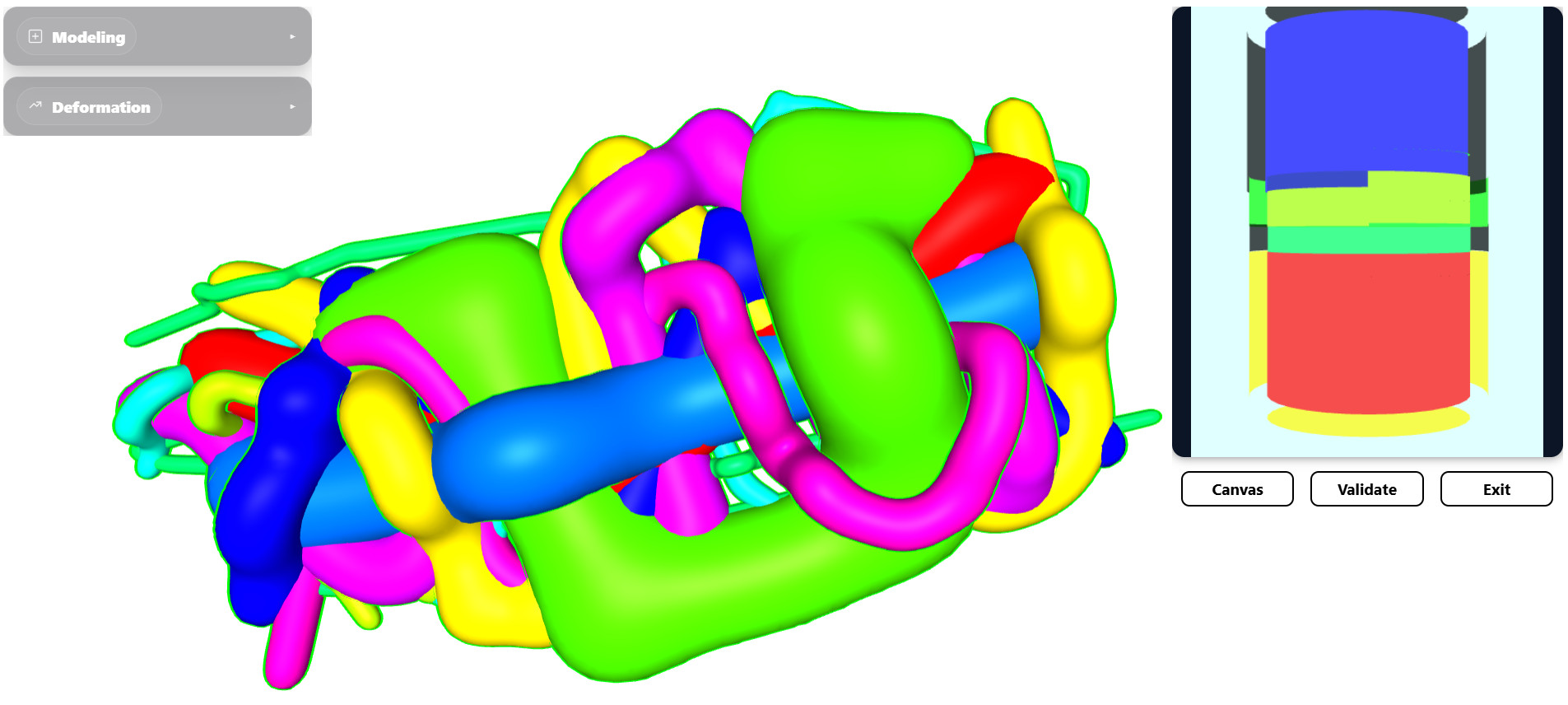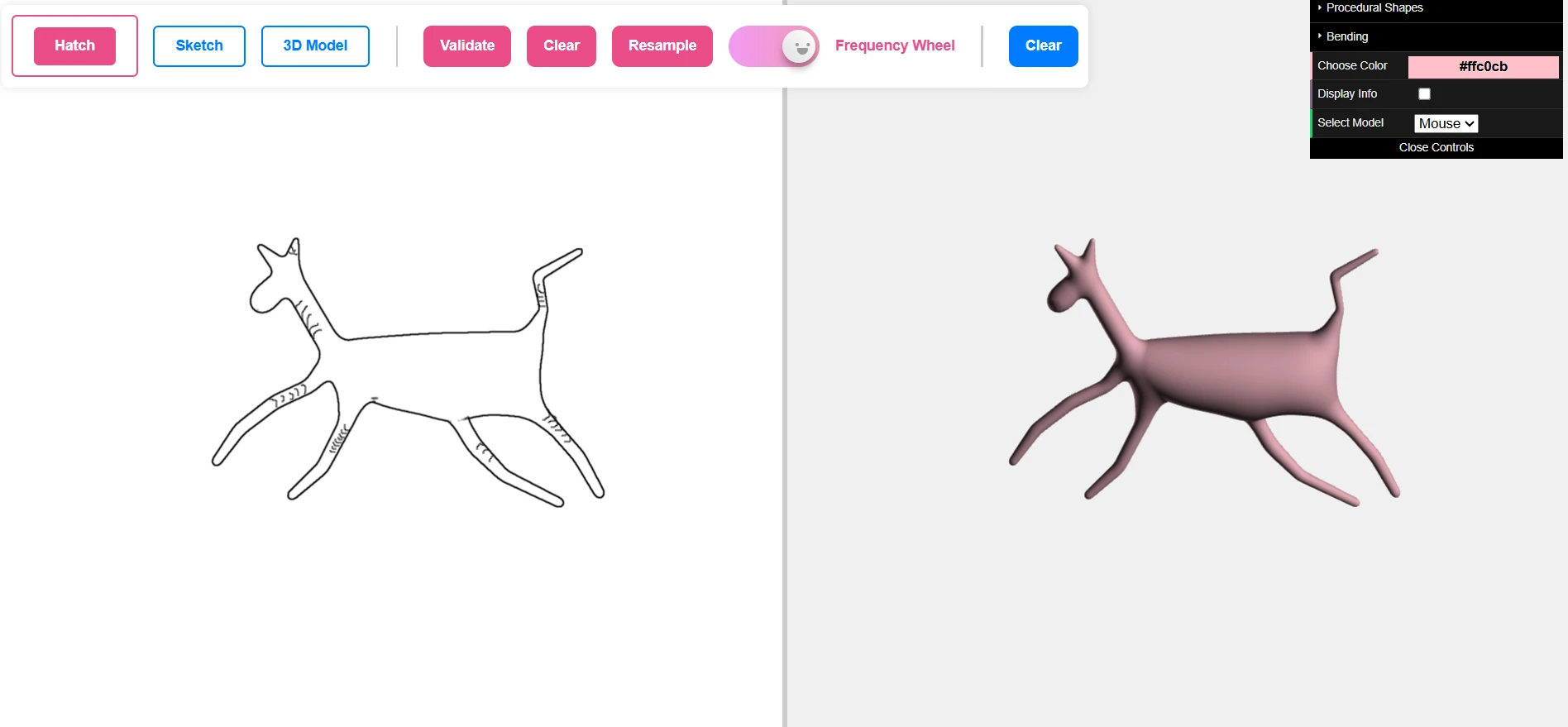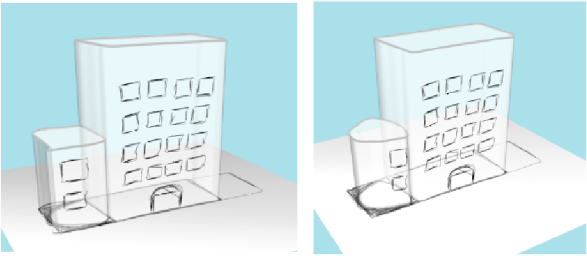Velocity Skinning is a method that adds automatically exagerated deformation triggered by skeletal velocity on top of standard skinning animation. This method is
real-time and can be implemented as a single pass vertex shader. It works "out-of-the-box" on
existing skinning data in reusing skinning weights, and it allows
non-linear-time editing from instantaneous pose and velocity information.
The complete project webpage relative to this work (article, videos, open source codes) is available at
velocityskinning.com.
This software is an implementation of the Velocity Skinning algorithm in JavaScript and WebGL. It allows to drag and drop a standard FBX or gltf virtual model and interact with it from its skeleton.
Example of data: [
Manga model], [
Cesium Man]
The software is provided under the MIT Open Source licence and was developed by Ewen Collin.



